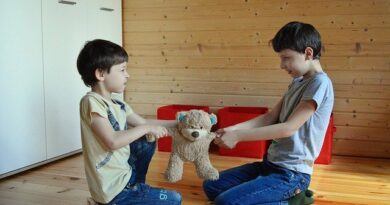Do Rewards Increase Motivation in Children?
Do rewards increase motivation in children? The answer may depend on the motivational method you use. Positive reinforcement, recognition, status, and choice of challenge are all examples of effective methods. However, some parents may feel that giving prizes to their children is bribery. To answer this question, child psychologists point out that society is built on rewards. The rewards can range from small tokens to expensive trips or even a brand new television.
Positive reinforcement
There are many ways to increase children’s motivation, including using tokens such as stars or points. These reinforcers have a value in exchange for specific behaviors. For example, a teacher might assign points to certain behaviors and reward a student when he achieves the maximum number of points. Another form of positive reinforcement is choice-based reinforcement. This method gives children the chance to indulge in their favorite activity or to receive a prize for achieving a certain number of points. The reward reinforces the desired behavior.
The type of reward is very important. Small rewards are more effective than big ones for younger children, as they are less patient. It’s important to use small rewards for small efforts, since children are generally poor at practicing patience. One way to use positive reinforcement is to use rewards for specific behaviors early on. Using these rewards in the early stages increases the likelihood that a child will repeat the behavior. By providing a small reward immediately after a behavior, the child is more likely to repeat it.
Another approach is intermittent scheduling. This involves delivering reinforcement to a child every fourth time the desired behavior is performed. Children with low self-esteem may be unaware of positive reinforcement. It may even reject praise. A child’s self-esteem might be lowered due to past failures or abuse. The best way to increase motivation in a child is by addressing their self-esteem first. If this happens, positive reinforcement can make a huge difference.
Children with learning disabilities often struggle with behavior problems. They may be concerned about differences with their peers and act out at home and in the classroom. Some children may intentionally act out, but others may lack confidence to handle their learning disabilities. In both cases, positive reinforcement can help them stop their inappropriate behavior. This can be an effective way to motivate children to be more responsible in the long run. So, if your child is struggling to stay focused, try to use positive reinforcement to get them to do what they want.
Another method of increasing motivation is to use routines. A toddler should spend at least 5 minutes interacting with toys within three feet of a sister or brother. For toddlers, this could mean choosing a favorite activity and implementing it in a consistent way. By identifying what a child enjoys, the EI team can help parents apply positive reinforcement to their daily lives. This method can be used to encourage children, and it is also helpful for caregivers.
Status
The current study suggests that status rewards increase motivation in children. Children who are motivated by self-enhancement values prefer to delay gratification rather than reap immediate rewards. The underlying reason for this may be that they prefer to maximize rewards when they can get them and avoid wasting time on unrelated activities. Furthermore, this type of reward is associated with higher self-esteem and conservation values. Additional developmental research is needed to understand the motivation to delay gratification in children.
The correlations between delayed gratification and values were weak and small. The low correlations may be due to the small sample sizes and age of children. These correlations may be a sign that further research is needed to find out which aspects of the response are associated with motivation. This is an important question to answer to understand why delayed gratification may enhance motivation in children. It is important to understand the reasons behind this research so that it can be useful for promoting positive health behavior among children.
When used appropriately, status rewards can increase motivation in children. Children driven by prestige and recognition often have problems with intrinsic motivation. These rewards are also useful to reward positive behavior because they act as immediate feedback. In addition, status rewards are often more effective than other methods of motivation, because they help children see what they’re doing right in front of others. But it’s important to remember that using excessive amounts of these rewards may actually demotivate a child and discourage them from further positive behavior.
Another way to increase intrinsic motivation in children is to focus on internal rewards. Children who have the feeling that they are related to their parent or other adults have an increased desire to explore their environment. This is also true of children who are emotionally close to their parents. If they feel their parents or caregivers will appreciate their efforts, they are more likely to engage in learning. If the parent does not feel that this is the case, then a child’s intrinsic motivation is reduced.
Recognition
One study suggests that the use of recognition can increase motivation in children by nearly 20%. It explains the benefits of recognizing positive outcomes and behaviors with praise, and suggests ways to incorporate them into your daily activities. A research team at the University of California Berkeley aimed to develop a variety of concrete, person-relevant, and suggested teaching strategies to increase children’s motivation. The research team aims to identify the key elements of effective recognition programs, as well as to design effective strategies for their use in the classroom.
Positive behavior recognition involves a variety of forms of positive reinforcement, including both tangible and intangible rewards. It’s based on the principles of observational learning, operant conditioning, and the humanistic perspective. The importance of recognizing desirable behaviors is discussed with reference to Chinese adolescents. The purpose of positive behavior recognition is to foster identity formation and the cultivation of social perspective thinking. However, some researchers argue that positive behavior recognition has a more limited effect on children.
The benefits of recognizing positive behaviors are many. Positive behavior recognition builds a sense of competence that can be very powerful. In addition, it is addictive. However, this type of reinforcement is only effective when it’s genuine and not accompanied by little trinkets, ineffective stickers, or “student of the month” awards. Recognition can be both physical and social, and can include anything from a warm hug to a new toy.
Choice of challenge
Children who are motivated show positive signs of emotion, are content with what they are doing, and are more likely to stay engaged. In contrast, children who lack motivation are quiet, sullen, or appear bored with the activity. This is because children who show low levels of motivation need constant adult supervision. Whether they are motivated or not is largely dependent on the type of challenge they are presented with. In order to encourage children to stay motivated, it’s crucial to provide them with choices that are relevant to their interests.
A child’s motivation is best developed when the task he or she is undertaking is challenging, but also possible. A highly motivated child will stay engaged for many minutes, even hours, before giving up. Conversely, an unmotivated child will quickly give up if he or she does not see immediate results. By varying the difficulty of a task, children will learn the importance of persistence. A successful child who faces challenges and overcomes them will develop the skill of perseverance.
Research has shown that children’s choice of challenge can increase their motivation. It may reduce cognitive dissonance, and may also increase their interest in an activity. This is because people tend to value what they choose, even if they didn’t choose it themselves. In addition, knowing that they’ve made a choice has protection against negative feedback. Further, research has shown that giving children genuine choices increases their commitment and effort levels.




